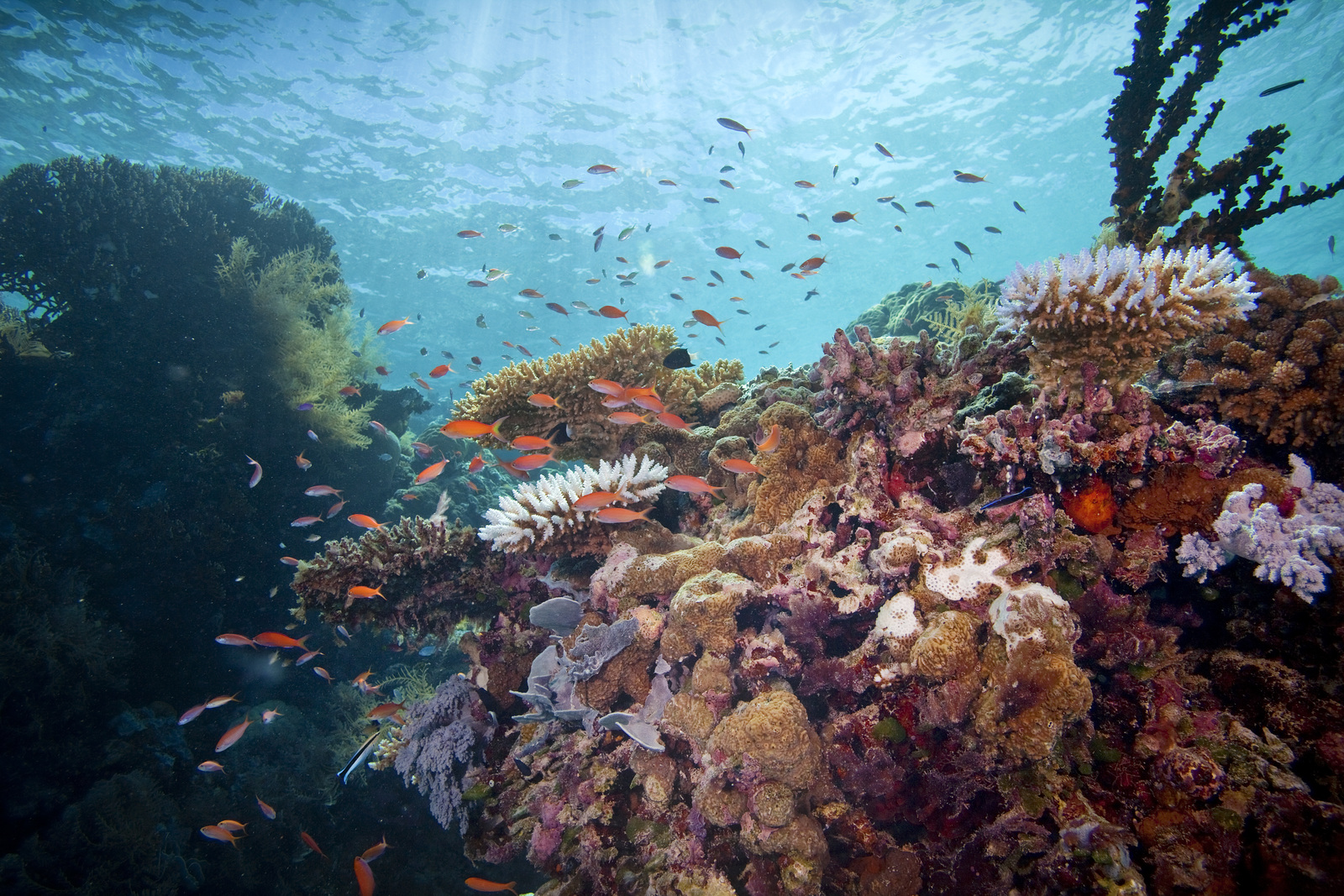
Vibrant coral reef in Palau. Photo © Ian Shive
RRN interviewed Dr. Annick Cros, coral reef scientist at the Hawaiian Institute of Marine Biology, to hear about highlights from her recent publication on population genetic structure between Yap and Palau and how genetics can be used in coral reef management.
Click the play button below to listen to the interview.
Interview Transcript
Reef Resilience Network (RRN): Hello everyone, Reef Resilience is interviewing Dr. Annick Cros, coral reef scientist at the Hawaiian Institute of Marine Biology where she will share highlights from her recent publication on population genetic structure between Yap and Palau and how genetics can be used to tackle conservation issues.
Annick Cros (AC): Hi everyone! Thanks for having me here.
RRN: Can you start with introducing what population genetics is?
AC: In very simple terms, it is the study of genetic variations in populations to understand their structure, boundaries and connectivity with other populations. When you study population genetics, you typically ask questions such as: “How much gene flow is there between these two populations?” As a manager, you surprisingly ask very similar questions! “How much spillover will I get from this MPA and where will larvae recruit?” Or “are these two groups of turtles related and should I manage them as one?”
RRN: How can population genetics be used as a tool in management?
AC: So you are right in thinking that using population genetics to solve a conservation issue can be time consuming, expensive and requires resources and skills you may not have. However, in the case of connectivity of marine organisms, and the design of MPA networks, population genetics seems to be the best tool that we have at the moment. This is due to the fact most marine organisms reproduce via minute pelagic larvae that are very difficult to track. Since we often rely on oceanographic models to predict where larvae will go and settle we do not always get the right answer. Population genetics will not track larvae directly but will give information on where larvae have settled over time. The paper that we wrote actually is an example of how to use population genetics to answer one of these questions.
We used Palau as our case study because in 1998 Palau suffered heavy bleaching mortality. Yet by 2004-2005, studies showed that the reef had almost recovered. Managers and scientists wanted to know how it had recovered so quickly and where the coral larvae came from. One hypothesis that we had was supported by an oceanographic model was that Palau recovered from a pulse recruitment event from Yap, a neighboring island approximately 500 km away. We wanted to test if this was true. Using the coral Acropora hyacinthus, we tested for a founder effect between Yap and Palau. The founder effect states that if larvae originating from Yap had traveled to Palau and recolonized the reef, the same genetic signatures should be found on Yap and Palau but with less genetic diversity in Palau. And that’s because only a small fraction of Yap’s genetic diversity would have traveled to Palau. We found that this was not the case and we rejected the hypothesis that Yap was the sole source of larvae for Palau’s recovery. Other signs indicated that it was more than likely that Palau recovered from its own surviving colonies.
RRN: How do the results from your paper translate into management actions that can be implemented on the ground?
AC: Knowing that Palau had not recovered from Yap but from it’s own surviving colonies, this gave us the tools to tell managers that the best strategy to increase Palau’s reef resilience was to not to invest in Yap’s coral reefs but to instead invest in protecting their reefs at home. We are currently looking at further information to see how to protect these coral reefs at home based on population genetics.
Author: Cros, A., R.J. Toonen, S.W. Davies, and S.A. Karl
Year: 2016
View Full Article
Email for the full article: resilience@tnc.org
PeerJ4: e2330. doi:10.7717/peerj.2330


